As we have entered 2021 in what feels like a similar situation to 2020, many of us are at home, staying safe and protecting our NHS right now. This got me thinking about how we can all practice 5S at home.
5S is a system for organising spaces, meaning work can be performed efficiently, effectively and safely. The system encourages you to put everything where it belongs and keep the workplace clean, making it easier for people to do their jobs without wasting time or risking injury.
There is a five-step process we can use to improve the overall function of a business, and in this case, our home:
- Sort
- Set in Order
- Shine
- Standardise
- Sustain
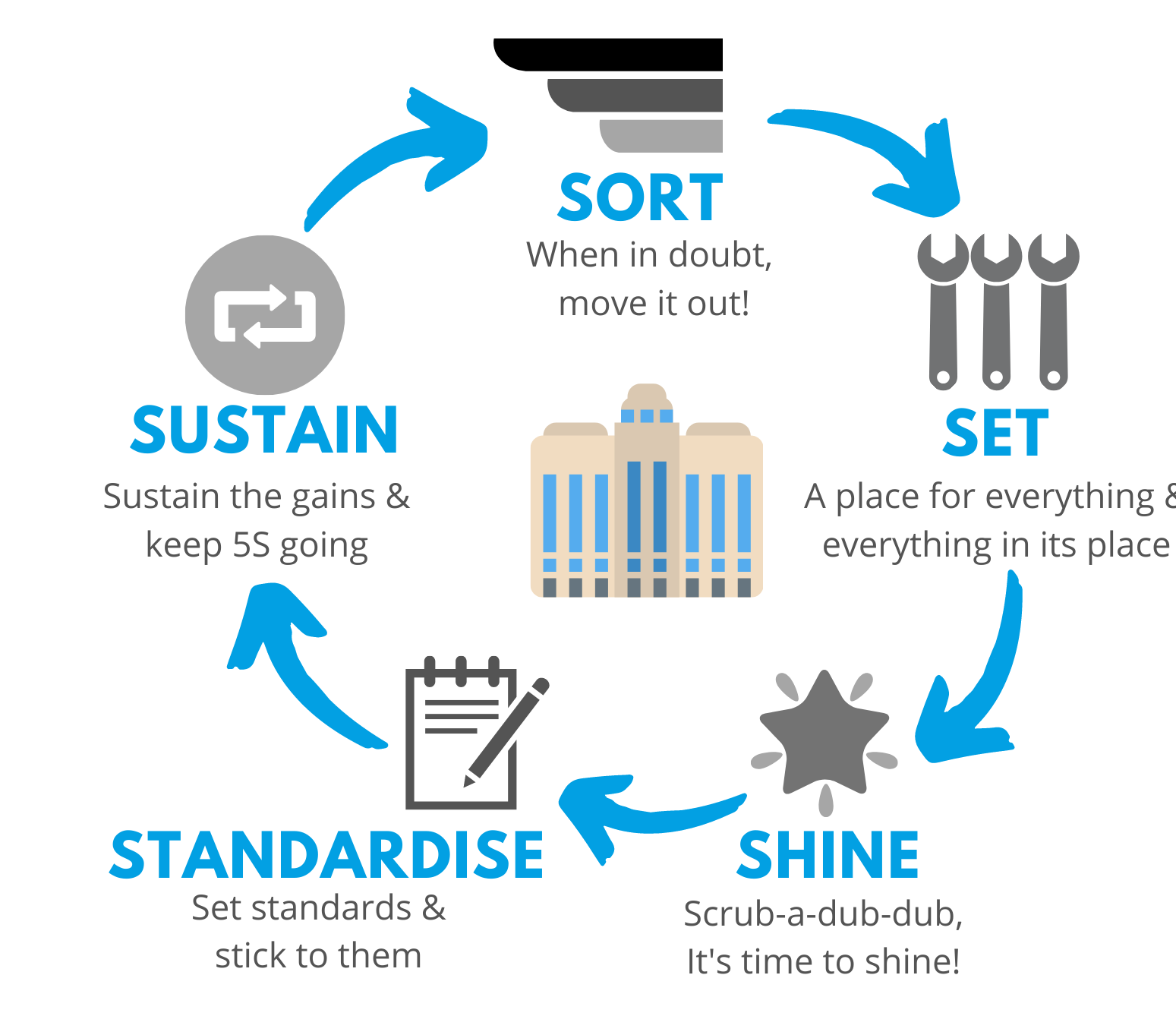
I am SO excited to share today’s post with you, it’s no secret how much I love to be organised. Over the last lockdown, I began watching the Home Edit on Netflix hosted by Clea Sheerer and Joanna Teplin and it resuscitated my desire to have a more efficient and maintained environment; one that didn’t require me to constantly run after my two kids and spend all my spare time doing household chores. I was confident that there had to be some hacks for lockdown times, so I rose to the challenge! Using the 5S principles, I decided to reorganise my space around our new ‘lockdown’ daily routines…
5S is rooted in functional systems that can be maintained for the long-term, transforming spaces and the processes required for upkeep. I can honestly say, this organisation method – be it in the office or in the ‘new office’ called home, is transformational! Here are some of the solutions I have implemented over the past few months and why they’ve been so effective…
To start with, I purchased lots of containers, drawer inserts, dividers, shelves and labels.
SORT
I began sorting through things to weed out what I no longer needed. For example, in the kitchen, I had packs of noodles that no one in my family likes and they were unnecessarily taking up space. I created a box filled with food to take to the local food bank for it to be put to better use. Other items were sent for recycling or dropped to the charity shops. It felt great to have a clear out – it made me feel ‘lighter’ as there was less to manage and maintain.
Whilst sorting, I asked myself these questions:
- What is the purpose of this item?
- When was it last used?
- How frequently is it used?
- Who uses it?
- Does it really need to be here?
This helped to determine what I really needed to keep and what I really wouldn’t miss!
SET
Now came the fun part – organising!
First thing’s first, this was a job too big for me to do on my own with juggling work, home schooling and other household chores so I needed to deploy a team and needed them to be just as committed as me to making this a success. So I engaged my daughters by giving them a task that I knew would get them excited. I got them to start organising their Lego bricks.
Not only did they enjoy doing this, they also found a renewed passion for playing with their Lego because they found the process of creating things easier with all their bricks sorted by colour. If you’re a parent like me, you’ll know that trying to keep the kids occupied during lockdown is a challenge, so this really helped!
Once they were excited about getting organising, I got them involved in helping to systematise the rest of the house.
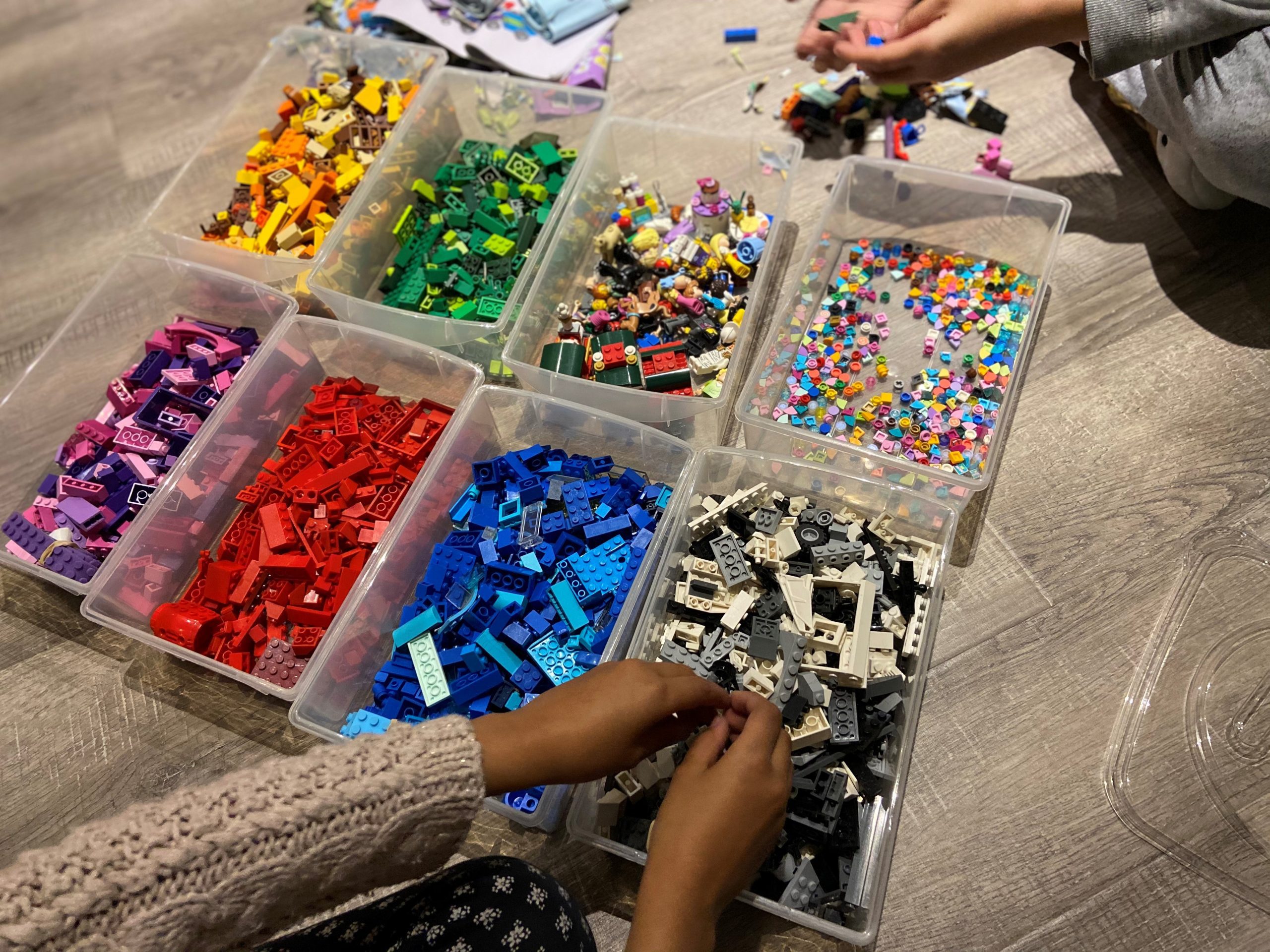
Here are some examples:
Food cupboards – this has helped with stock control as I can now see what we have and when we are running short of items. It has also helped to reduce food waste. I arranged food items based on their expiry dates and placed those items that we need regular access to in front. On the contrary, things like chocolates were placed out of reach and made less accessible to control temptation.
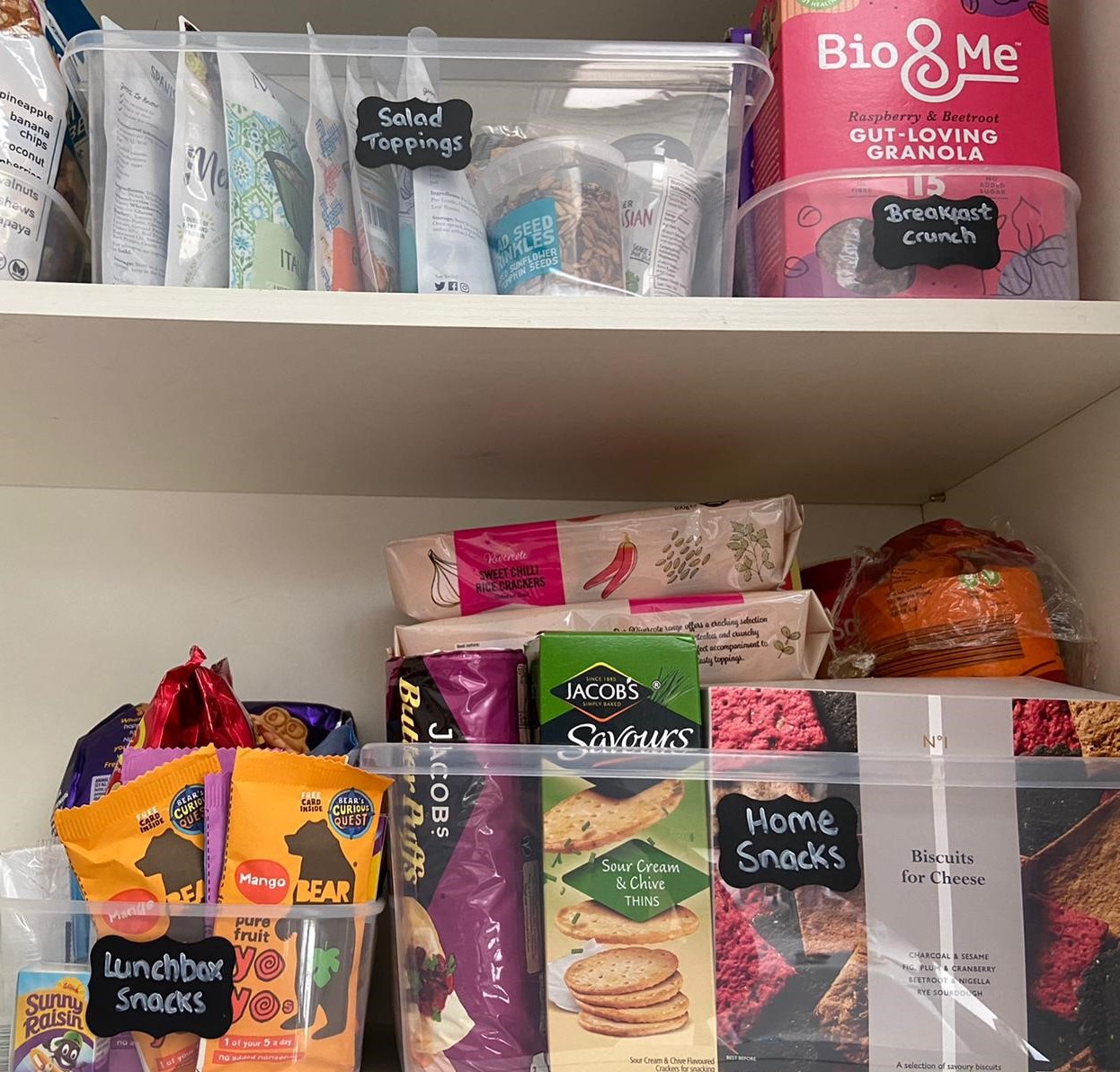
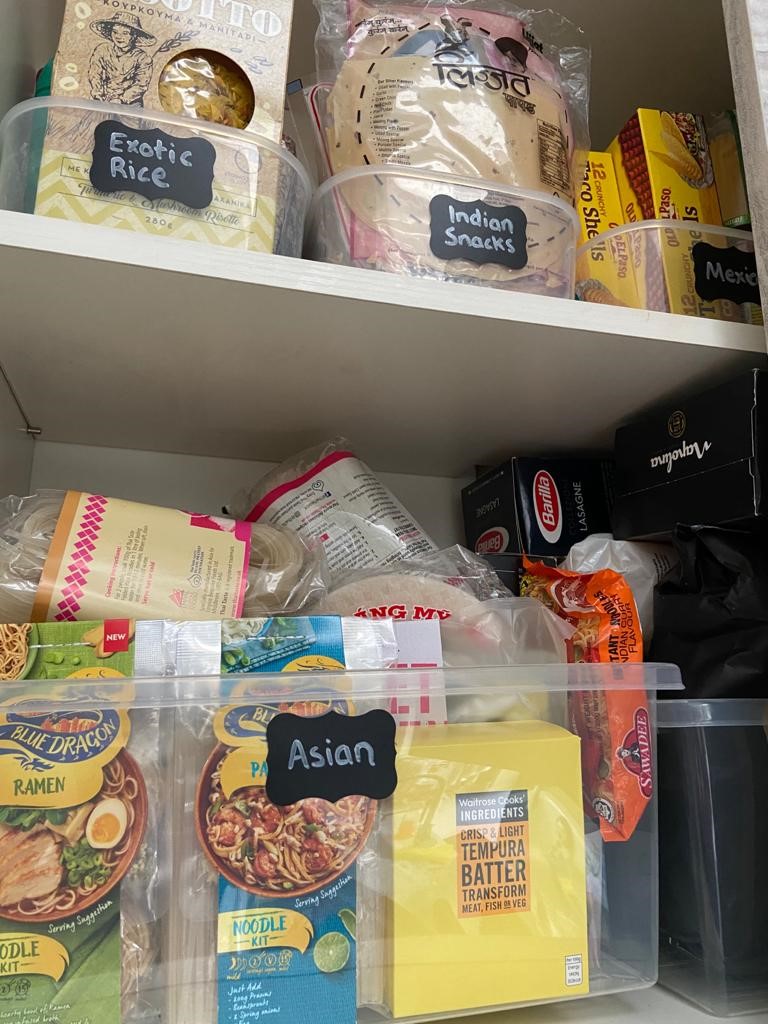
Fridge – By compartmentalising the foods and drinks in the fridge, it’s become much easier to find what I’m looking for and minimise food waste. I even created a basket labelled ‘kids snacks’ and placed it on the bottom shelf so that the kids could easily access healthy snacks from the fridge whilst I’m on video calls all day.
Spices – Lockdown has been a great opportunity to help my daughters develop their life-skills. They have a passion for cooking like me, so to help them learn, I decided to label all my spices to make it easier for them to follow recipes.
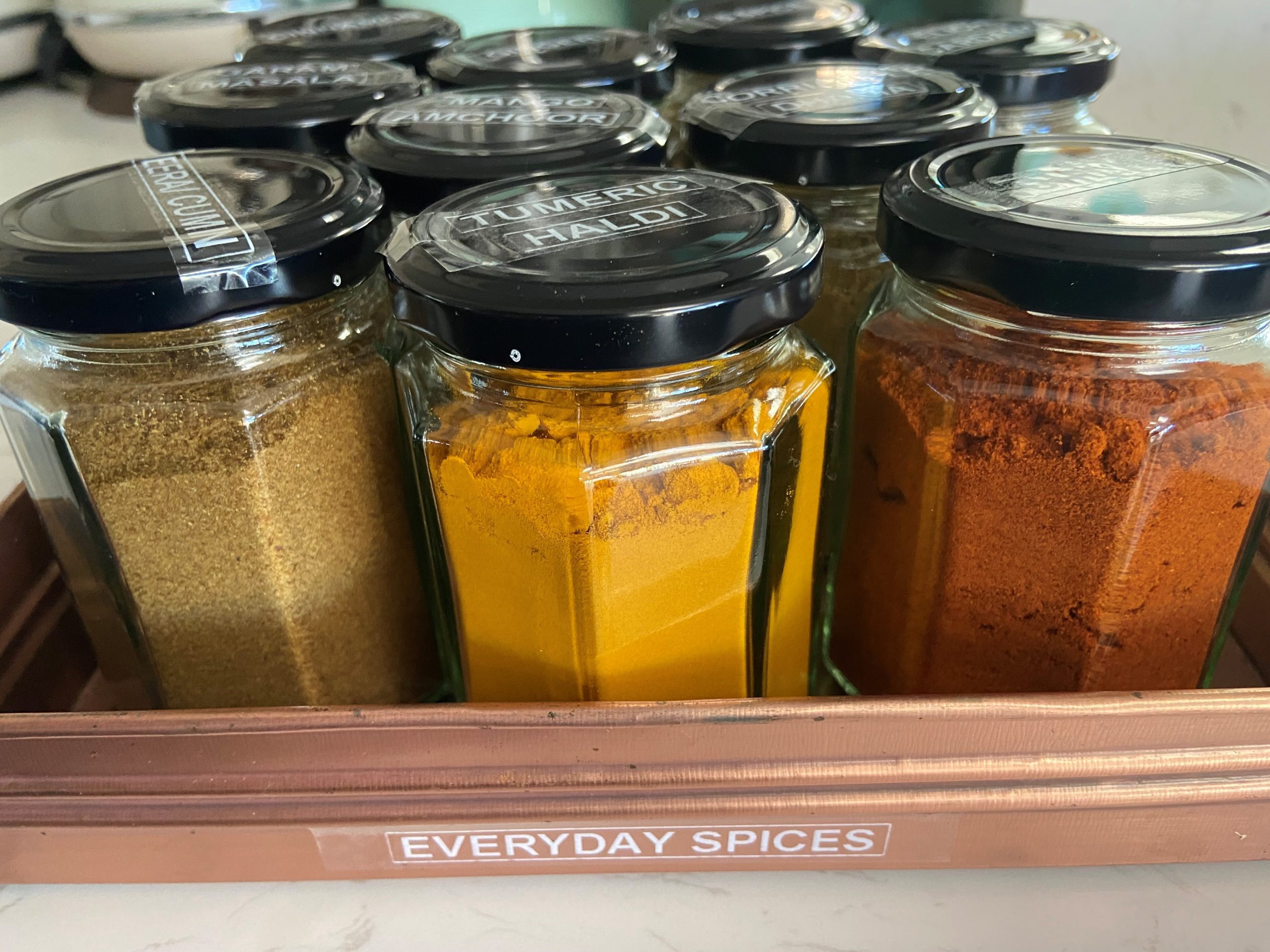
Baking tools – I love baking, it’s a hobby and a way for me to unwind after a busy day at work. I’ve often felt like baking but the thought of emptying my cupboards to find that cake tin or piping nozzle put me off. By organising my tools, I now find it much easier to access what I need, and consequently it’s changed my behaviour and encouraged me to do more of what I enjoy.

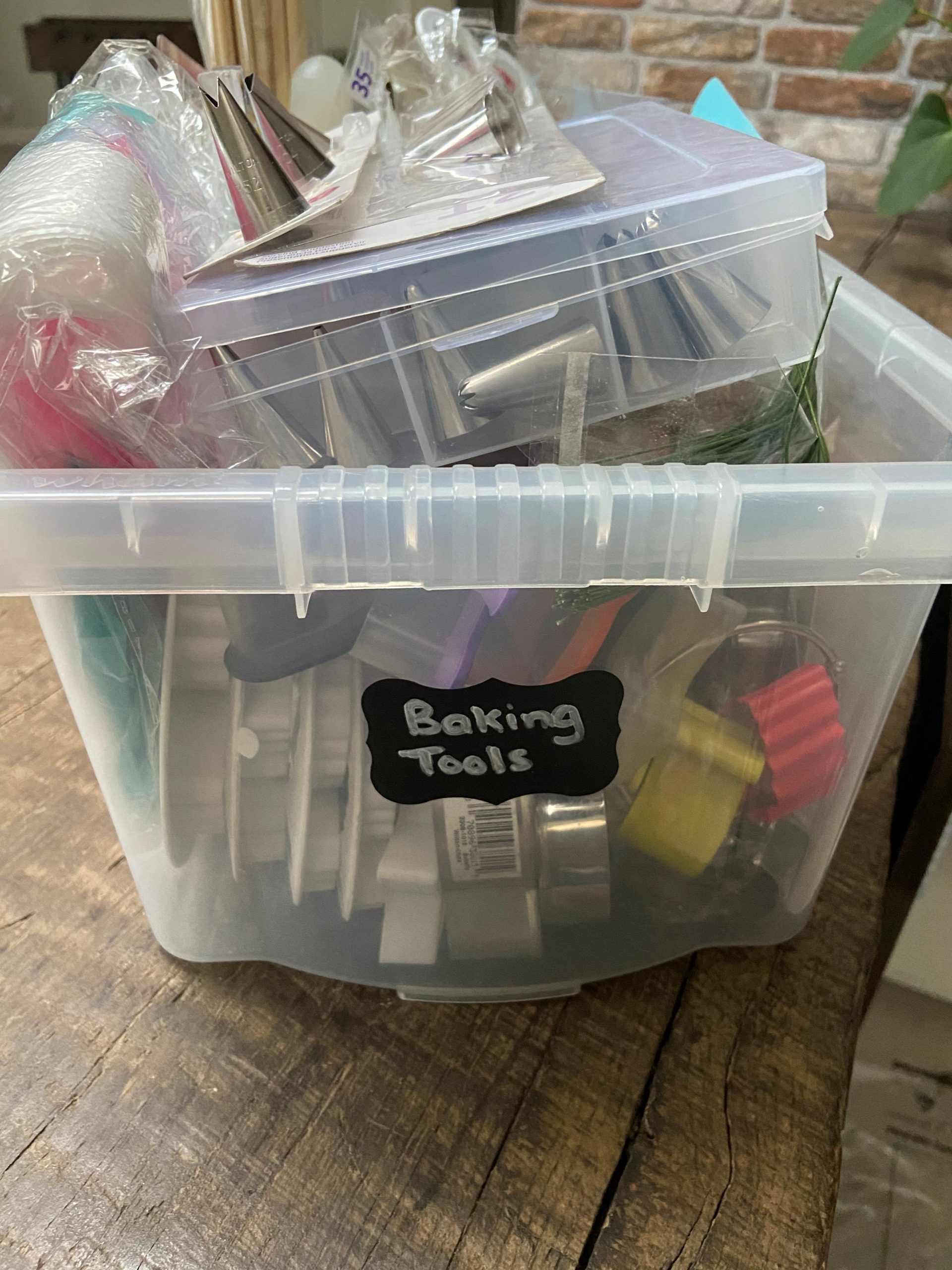
Other consumables – I previously found myself overbuying laundry detergents, washing up liquids and cleaning products because I could never remember what I already had at home. As a result, my laundry room was filled with too much stock and wasting space. By organising these items, I now have a robust inventory management process in place.

Whilst organising everything, the questions I asked myself were:
- Who uses which items and how can I group these into zones/ stations?
- Which items are used most frequently?
- Where would the most logical place be to place them?
- Would some placements cut down unnecessary motion (a lean waste)?
These questions really got me to think about the everyday processes I do and how I could streamline them to reduce the time it takes.
SHINE
Next, I made sure that everything was clean and nicely placed so that everyone could see ‘what good looks like’.
This links to the ‘Broken Windows Theory’ which is a theory proposed by James Q. Wilson and George Kelling in 1982. Their theory posits that that one broken window in a building can turn into multiple broken windows if the one window is not fixed quickly. In other words, visual disorder can lead to more disorder. Although their theory was focused on crime, it relates to every environment. For example, if there is already one dirty dish in the sink, you don’t feel guilty about adding another one to it and walking away. Being forced to confront minor problems can heavily influence how people feel about their environment.
STANDARDISE
Visual cues such as signs and labels play an important role in 5S. Visual management can help to create a solid foundation for 5S projects, helping to keep things in order and the process running smoothly. The goal of visual management is to make the situation clear simply by looking at it, with as little observation or time as possible. Types of visual management in the workplace could include:
- Floor Markings
- Labels
- Wall Signs & Banners
- Shadow Boards
- Drawer Organisation
In my case, it was simply putting labels on containers. It worked wonders!
SUSTAIN
This is the most important element to make sure the gains are sustained. I discussed the logic behind how things were grouped with my family so that they understood the ‘why?’. I then monitored compliance – were the kids putting the ketchup back in the right place? Were the containers put back with the label facing forwards? Whilst these small details seem insignificant, too many of these small mistakes can take you back to square-one, as the broken window’s theory explains. Finally, I kept things interesting to avoid complacency. For instance, some of the containers in the house are titled ‘lucky dip’ so that the family are excited to see what’s in those containers after a trip to the supermarket. I’m also always looking for ways to improve – which will take us through the whole 5S cycle again.

Keeping the workspace maintained, whether in the office or at home, is like watering plants, everything needs some love to keep it good. These simple changes have made life easier and our home more efficient and sustainable; thus allowing me to spend my time more productively. Furthermore, we are now optimising available resources better and have less waste. There is a definite feel-good factor! So why not try the 5S process in your home and let us know how you get on?
